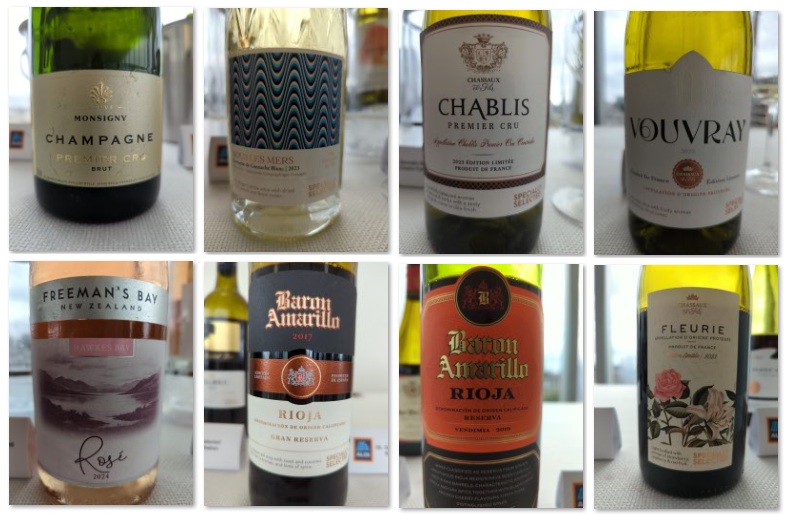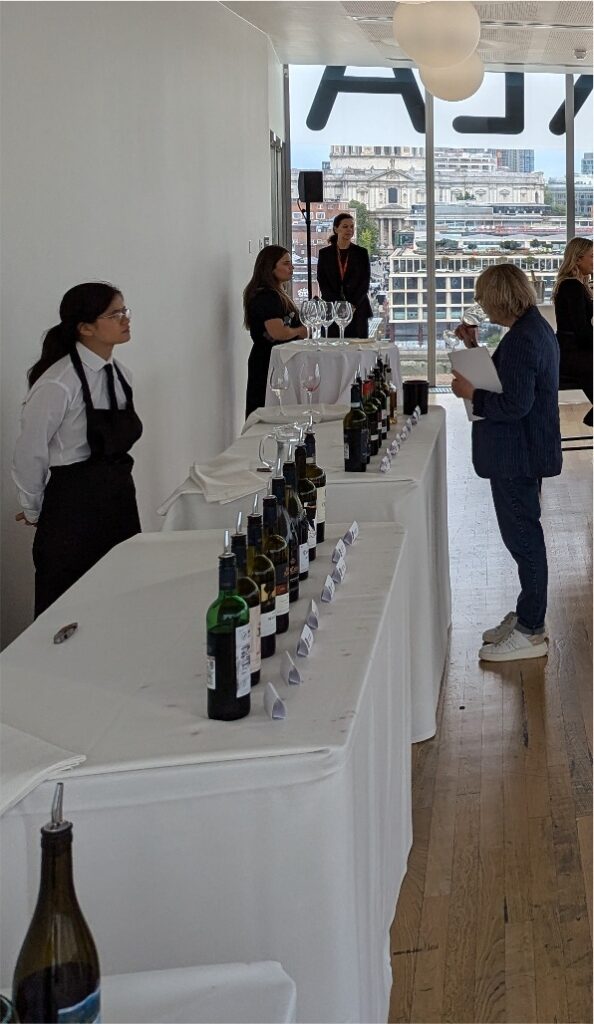
In September 2024, I attended the Aldi Autumn Winter Press Wine Tasting, where 98 wines were showcased. It was a great opportunity to experience the variety and quality of Aldi’s wine offerings as they continue to establish themselves as a major player in the UK market. In fact, Aldi recently became the third-largest wine retailer, by volume, in the UK.
One of the most remarkable statistics shared at the event was that Aldi sold an extra bottle of wine every second compared to the previous year. Aldi has also been working on their bottle labels. They have started to communicate taste profiles more clearly within the wine names, making it easier for shoppers to understand and choose wines that suit their palates.
Among the selection of wines presented, here are the ones I found the most flavoursome:

The Veuve Monsigny Champagne Premier Cru NV (12.5%), produced by Philizot, uses 60% Pinot Noir and 40% Chardonnay. It has a strong pastry aroma that immediately draws you in, followed by a dry palate with pronounced flavours of crisp apple and brioche. The wine has a long, satisfying finish that lingers beautifully. Although relatively expensive for an Aldi wine, at £21.99, it’s a great find for this level of quality. In fact, it was my favourite wine of the tasting. As a seasonal line, it will be available from October 2024.
The Specially Selected Sous Les Mers 2023 (13%) is a French wine made up of 70% Grenache Blanc and 30% Grenache Gris, showcasing a beautiful golden colour. On the nose, it offers delicate floral and pear notes. The palate is rich with flavours of peach and pear, delivering a smooth, velvety texture without any harsh acidity. This wine has a lovely, rounded taste, making it an enjoyable, easy-drinking option. As part of Aldi’s seasonal line, it will be available from October 2024 for £9.99.

The Specially Selected Chablis Premier Cru 2023 (13%) is a 100% Chardonnay wine from Burgundy, France, with a strong, inviting aroma. While the label states it’s dry, don’t let that deter you, this wine is wonderfully fruity. It offers fruity notes of apricot with a subtle herbal hint and the finish brings a very slight orange and smoky touch that lingers pleasantly. Although it’s relatively expensive for Aldi at £18.99, the quality justifies the price, but fingers crossed for a price reduction. This wine will be part of Aldi’s seasonal line, available from November 2024.
The Specially Selected Vouvray 2023 (11.5%) is a flavoursome wine with a fresh pear aroma that greets you on the nose. On the palate, it offers a strong apricot flavour, complemented by a subtle orange aftertaste, giving it a nice depth. The wine has a pleasant, rounded mouthfeel. At £7.49, it’s excellent value for a wine of this quality. As part of Aldi’s seasonal line, it will be available from October 2024.
The Freeman’s Bay Hawkes Bay Rosé 2024 (13%) caught me by surprise. When I saw Freeman’s Bay and New Zealand, I immediately expected a Sauvignon Blanc, but this rosé is actually made from 100% Merlot. It’s also a refreshing change from the more common Grenache-based rosés, offering a different twist. With a lovely strawberry aroma and flavour, this rosé is very slightly sweet and intensely fruity, making it an unexpectedly delightful wine. Though the label doesn’t mention the grape, which might confuse some people, it’s a great find once you give it a chance. Available from September 2024 as part of Aldi’s seasonal line, it’s priced at £8.49.
The Chassaux Fleurie 2023 (13%) is a 100% Gamay from the Beaujolais region in France, presented with an elegantly designed bottle label. Despite being light-bodied, it delivers an impressive aroma and flavour profile, with bright notes of strawberry and raspberry, complemented by a subtle hint of pepper. At just £9.99, this wine feels like it’s worth much more than its price suggests. This seasonal offering will be available from October 2024.
The Baron Amarillo Rioja Reserva 2019 (13.5%) is made from 100% Tempranillo and is a new vintage of a wine I enjoyed in a previous Aldi tasting. While perhaps less intense than the 2018 vintage, it still offers great flavours of black cherry and blackcurrant. At just £5.99, it remains excellent value for money and a great choice for those seeking a Rioja at an affordable price. As part of Aldi’s core line, it’s available now.
The Specially Selected Rioja Gran Reserva 2017 (13.5%), made from 100% Tempranillo, bears similarities to the Baron Amarillo Rioja Reserva but with a few distinct differences. It is very slightly sweeter, with a stronger mid-palate taste, though, when comparing side-by-side, the Baron Amarillo offered a more pronounced aroma. At £9.99, it will be part of Aldi’s seasonal line, available from September 2024.
Most of these are seasonal items so take care to check the available dates mentioned above. Prices are also subject to change.













